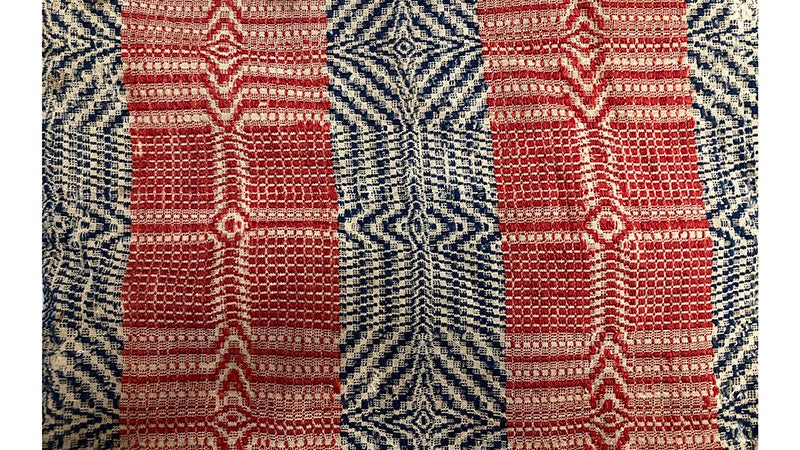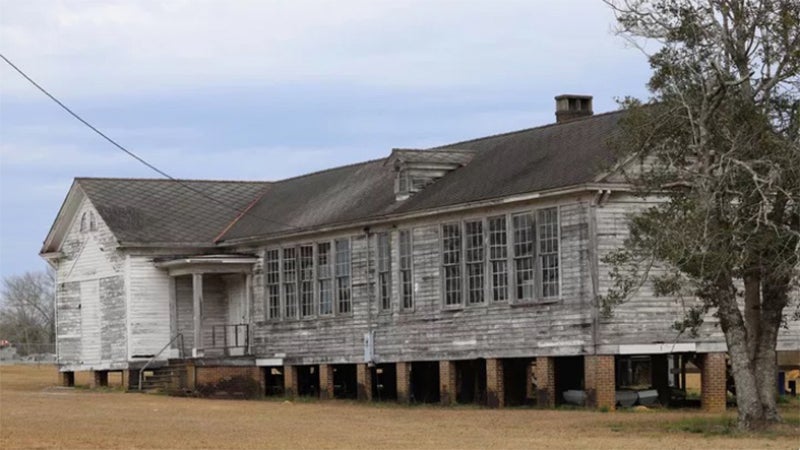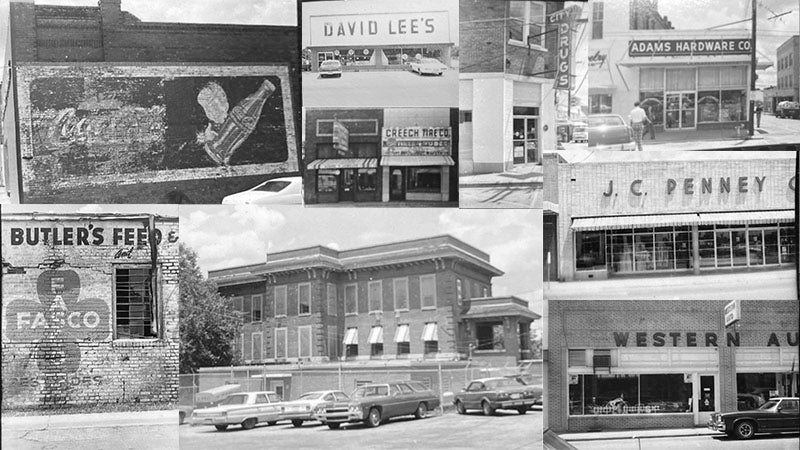Remember when: Railroad expanded economy
Published 12:11 pm Saturday, November 12, 2016
“Work for the night is coming, Work thro’ the morning hours, Work while the dew is sparkling, Work ‘mid springing flow’rs, Work when the day grows brighter, Work in the glowing sun, Work for the night is coming, When man’s work is done.”
“Work for the night is coming, Under the sunset skies, While their bright tints are glowing, Work for the daylight flies, Work till the last beam fadeth, Fadeth to shine no more, Work while the night is dark’ning, When man’s work is o’er.”
This hymn was written in the 1800s by Annie Coghill and Lowell Mason who was considered to be the father of music education in the United States. The Bible states in Genesis, “In the sweat of thy face shalt thou eat bread.” Henry Van Dyke penned these words, “Heaven is blessed with perfect rest, but the blessing of earth is toil.”
In 1899 when the train line was extended into downtown Andalusia from Searight and the first Central of Georgia train “blowed” the whistle as it steamed in, there were about 125 people living in the immediate downtown area. One year later with the improved transportation, the population doubled to about 250, old newspapers report. The new mode of transportation, the trains, could then ship in building supplies, mules for hauling, and even seafood from New Orleans. The farmers could finally ship out cotton, pine products, and other crops to market. By 1920 there were about 5,000 citizens. The little village had grown to a town because of the work and trade of its many industrious citizens. Even a chamber of commerce was established in the early 1920s along with a number of men’s and women’s civic clubs. The Study Club organized a group of ladies in 1913 who were persistent and determined in their efforts to begin a public library.
As one peruses the old newspapers on microfilm at the Andalusia Public Library, there are evidences in print, reports of the hard working Andalusians, a generation or two who little by little brought together new businesses, schools, churches, homes, neighborhoods, public utilities, private enterprises of the day, and entertainment venues that all came together to make quite a community situated up Devereaux Hill from old Montezuma, the river village with its original trading post. Like an old timer once said – “Stand on the steps of the courthouse and spit to the right. You’ll hit the Conecuh River. Spit to the left and you’ll hit the Yellow River!”
On September 18, 1917, the newspaper wrote, “The enrollment at the Andalusia City Schools was 510 Monday morning. That was the largest in the history of the school.”
Had there not been the flu epidemic in 1918 and the exodus of young men going off to World War I, some who never returned, there probably would have been an even larger population by 1920.
Quoting some accounts from the Andalusia Star, November 12, 1918 reports, “John Carson McArtan aged 20 years, eldest son of Mr. and Mrs. D. A. McArtan died Monday after an illness of influenza followed by pneumonia.” (Mr. Duncan McArtan had been instrumental in the construction of the magnificent First Presbyterian Church around 1906.)
The November 19, 1918 edition reads, “Sweet baby gone – The angel of death visited the home of Mr. and Mrs. J. H. Thomasson and plucked the brightest sweetest flower, little Hilton Thomasson, age three years.”
On November 22, 1918, the health department reported as follows: “Influenza Situation – The number of new cases is growing steadily smaller while more are being released than are placed in quarantine each day. No new cases have developed among the employees of the packing plant.”
Magnolia Cemetery is full of headstones with dates of death being 1918.
Back in May 1918, the Andalusia Star announces, “At the requests of a local committee headed by Col. G. O Waits, the county board of revenue sold to local purchasers the old (1897) courthouse building which will be removed and the site will be converted into a little park under the supervision of the Civics Club. This action will meet the approval of the people generally as this old building in the center of the square detracts much from the appearance of the city.” (This had been the first brick Covington County courthouse. It sat in the middle of the square and was designed by an architect and known to be the “best courthouse building south of Montgomery.”)
On September 24, 1920, a sports article appeared, “The Andalusia High School will have a football team this season.” Another article announced on February 8, 1921 reads, “Superintendent Baker tells teachers to advance no pupil whose attendance is under seven months.”
So many students in the old days, especially the boys, had to miss school at certain times in the school year to do the work on the farm, planting, tending, mending fences, and harvesting. My grandfather Brunson and his brothers had to walk to the farm early each morning from the Brunson (City) Hotel on South Cotton Street near the L & N Railroad Depot where their large family of 12 children lived. The farm was located at the end of Carlton Street where their daily routine was to dig sweet potatoes, hoe weeds, and chop wood along with other farm duties. Then they walked back to the hotel, milked cows, ate breakfast prepared by their mother and sisters, and headed straight to the East Three Notch School, all by eight o’clock. During those early years of the 1920s, students only went to school until about the end of the 10th grade when they were graduated.
I remember the story about Johnny Crenshaw accompanying those Brunson boys down to the farm. Well, the mule, “One-Eyed Jack,” threw Johnny to the ground and kicked him in the head. Mama Brunson put young Johnny to bed there in one of the hotel rooms and nursed him back to good health. Those boys remained friends with their growing up playmate Johnny Crenshaw for their entire lives.
As a matter of fact, for many years, Crenshaw’s Café owned and operated by Johnny Crenshaw down on North Cotton Street served fried chicken and “light” bread from the Brunson Bakery.
Here are some excerpts in the Andalusia Star from the early 1920s.
“The Patrick Hardware Company installed a new funeral car, one of the first of the kind ever brought to Covington County.” (July 9, 1920)(The Patricks were the undertakers at the time.)
“The Andalusia Baseball Club was organized Monday, Mints Milligan was elected manager.” (July 13, 1920)
“Dirt will be broken on the county fair building Monday.” (July 13, 1920)
“Sessoms Grocery Company adds a refrigeration plant to the business.” (December 14, 1920)
“Church Street site chosen for (new) city high school.” (April 7, 1922)
“The Covington County Library has removed (from the Masonic Building) to new quarters in the new First National Bank Building, 2nd floor.” (July 11, 1922)
“A new ice plant begins operation, the Consumers Ice and Cold Storage.” (September 1, 1922)
“Local plant of Swift and Company opens this week.” (December 5, 1922)
“Undergarments factory being organized for early operation here.” (January 5, 1923)
“New machinery for the Andala Company arrives. Plant opens April 15.” (March 30, 1923)
“Textile and other new industries will be free from taxes for 5 years in Covington and Andalusia.” (May 1, 1923)
“Beginning Wednesday of next week, there will be a domino tournament held for the benefit of the library.” (May 4, 1923)
“Andalusia Ice Cream Company will begin operation Friday.” (May 29, 1923)
“Woco-Pep plant to open here November 1.” (September 7, 1923)
“Andalusia has a new athletic organization, the Andalusia Athletic Association organized by the American Legion to sponsor all forms of athletics.” (January 29, 1924)
“New laundry for Andalusia soon, the Andalusia Steam Laundry will begin operation here.” (April 17, 1924)
“Bids wanted in short time on new post office.” (May 23, 1924)
“Rapid progress made on new Methodist Church of Andalusia,” (May 20, 1924)
“New pipe organ ordered for local Methodist Church.” (August 18, 1924)
Businesses must have been flourishing in the early 1920s. Downtown buildings that had been constructed were occupied. A skyscraper had been built. The county seat was busy. The Three Notch Museum has a display collection of older photos taken most likely by a traveling photographer. He captured business owners and employees posing in front of their downtown Andalusia storefronts.
The early location of the Andalusia Baking Company was on South Cotton Street, and they moved across the street about that time from the basement of the Brunson (City) Hotel due to mandatory compliance with health department standards of baking required to bake above ground level. The workers along with owners, Charlie and Matt Brunson, dressed in white uniforms were pictured standing out on the sidewalk. There was also an inside picture of the workers removing the baked bread out of the brick ovens with the long wooden paddles. I am told that the “brick-oven” bread was black around the edges where the flame touched the ends. That was long before gas ovens that rotated the loaves around and the bread slicing machines were invented. The advertising slogan back then was “Blue Bird Bread Creates a Spirit of Happiness.”
Looking back, progress has always been apparent as Andalusians tell stories of their grandparents and great grandparents, the days of harder work than today that went on.
I recall a chamber of commerce decade theme, “Upward in the 80’s.” Andalusia took the necessary steps to become a “Prepared City” for business in the state of Alabama. Andalusia business people have always been industrious, creative, hard-working folks going back to the early days beginning when they moved up the hill to higher ground in 1844. My hope is that Andalusia will continue to promote a good business climate leading the way to future growth.
As country singer George Jones sang, “I Wonder, Who’s Gonna Fill Their Shoes?” May we REMEMBER WHEN and recognize those who worked in our hometown making it what it is today.
ope that there will be others to follow in the years to come who will work to keep a tradition of excellence in the work places of the “dimple of Dixie” and the “heart of South Alabama.”





